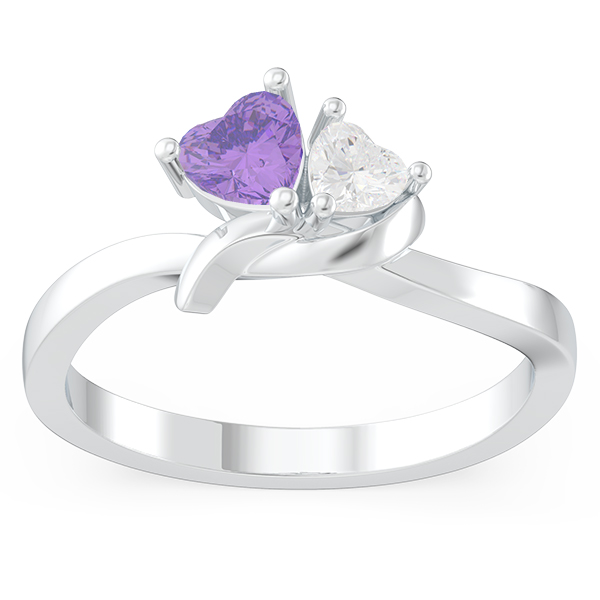The origin of natural mosanite can be traced back to the late 19th century. The word “mosanite” comes from Dr. Henri Moissan, who discovered the mineral in the Arizona meteorite crater in 1904.
Moissanite (a kind of silicon carbide) is also called carborundum. Most of the moissanite on the market is synthetic. The natural moissanite is very rare. For many years, it is mainly used as abrasive. In recent years, it has developed applications in the field of electronics, such as light-emitting diode materials. At present, the color of domestically synthesized moissanite is mostly below the I or I color level, and some moissanite has a light green color. In 2017, the US imported moissanite can reach D color. The appearance of moissanite is very similar to that of natural diamond, which is hard to be distinguished by the naked eye. It is also a semi-precious stone whose physical properties are closest to those of natural diamonds.
In addition to synthetic diamonds in the counterfeit of natural diamonds, the most confusing possibility is the “Moissanite”. Moissanite name bracelet refers to the synthetic moissanite , also known as synthetic silicon carbide. Because its internal structure, numerical value, and appearance are strikingly similar to diamonds, even if it is detected by a general thermal conductivity meter, it will be judged as a natural diamond. Therefore, ordinary consumers are more difficult to judge. But in fact, moissanite is “demonized” by everyone. As long as you know its history and the key points that distinguish it from natural diamonds, you can easily distinguish the two.
What is moissanite?
Natural moissanite is rare in number and can only be found in extreme environments. Later, C3, a company based in north Carolina, manufactured synthetic moissanite and brought it to the international market, where it gained great popularity. Synthetic moissanite sister rings possesses properties that are incomparably similar to natural diamonds. In Mohs hardness, diamonds are 10 and moissanite is 9.25, which is much higher than other precious stones; in dispersion values, diamonds are 0.044 and moissanite is 0.104; In terms of refractive index, the diamond is 2.417 and moissanite is 2.65. Therefore, synthetic moissanite not only has the same wear-resistant and eternal characteristics as natural diamonds, but its brilliance is even more resplendent than natural diamonds.
How to distinguish between moissanite and natural diamond
Although they have many similarities, moissanite custom cufflinks costs a tenth of a diamond. Therefore, many jewelry manufacturers use it as a substitute for diamonds to make a lot of exaggerated fashion jewelry to achieve the effect of natural diamonds. The proportion of moissanite and natural diamond is different. The proportion of diamonds is 3.52, while the proportion of moissanite is only 3.22. Under certain conditions, for the moissanite infinity bracelet without inlaying, it can be tested with methyl iodide specific gravity liquid (specific gravity 3.32), and it is easy to distinguish the two.
Although the hardness of moissanite is as high as 9.25, it is different from natural diamonds. Therefore, the scoring test on the surface of moissanite with diamond hardness tester will leave scratches, but for natural diamonds, there is no way for hardness tester to leave scratches on its surface.
Since natural diamonds are single refracted gems, it is impossible to see double shadow with a 10x magnifying glass. However, the moissanite is a birefringent gemstone. When viewed from the crown of the kite facet at the bottom of the 10 times magnifying glass, the phenomenon of double shadow can be seen.
Polished lines: The waist of moissanite necklace with picture is polished parallel to each other, which is completely different from diamond. Moreover, due to the difference in different directions, the polishing direction should be constantly adjusted during the diamond polishing process, and the moissanite can be polished in the same direction. This is particularly apparent between adjacent facets.
Inclusions: The inclusions of diamonds differ from the contents of moissanite. All of the identified moissanites have some inclusions that are arranged in a needle-like parallel. Fine parallel-arranged reflection lines are visible in some moissanites cheap custom necklaces.
If worn as a general ornament, moissanite can be said to have no shortcomings – low in price and has the features of natural diamond. But if it is for collection or investment, or to preserve value, then moissanite is not an ideal choice. After all, it is artificially synthesized, and the price is bound to be affected by technological development and production. Compared with natural diamonds, there is still a big difference.


